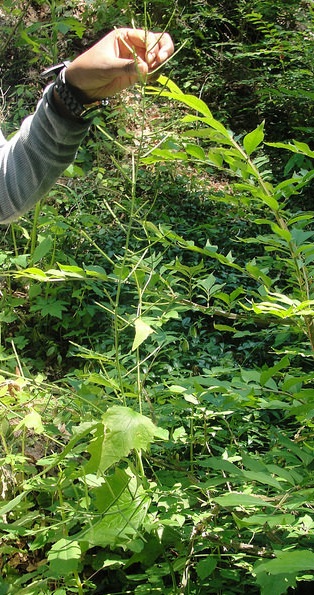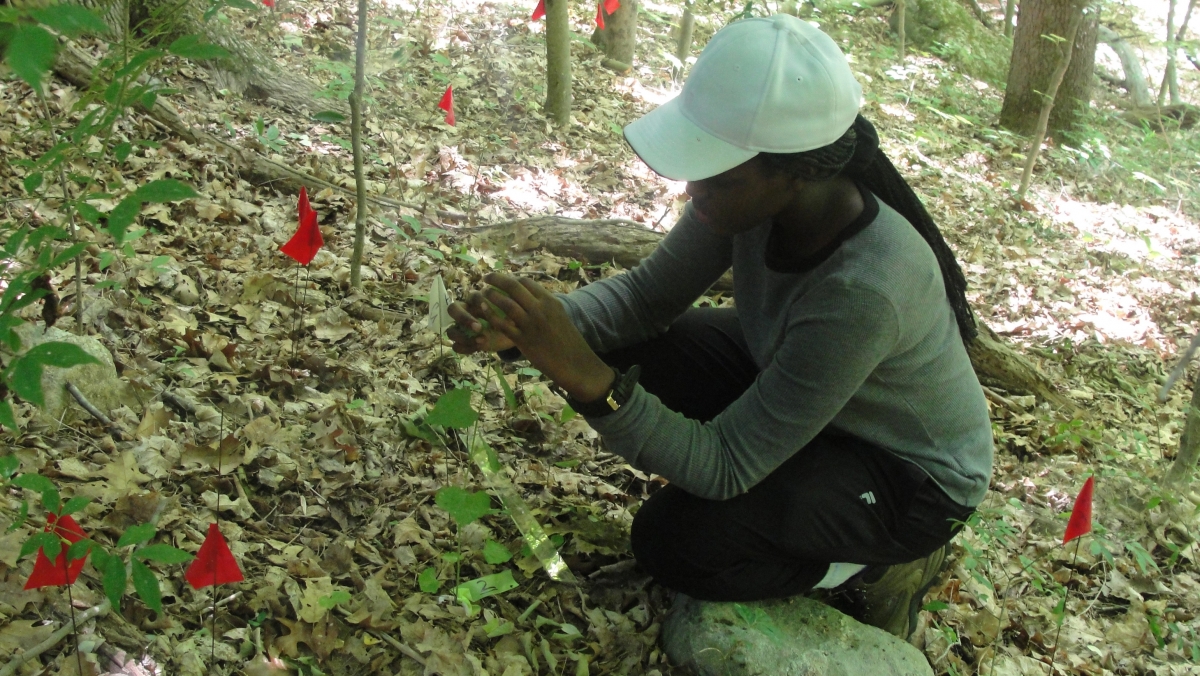You are here
The Invasion of Garlic Mustard Plants: The Aliens of Nature
 Gray slimy skin, large head, and dark piercing black eyes are some features that compose the classic science fiction alien. In typical science fiction fashion, these aliens come from outer space and invade the Earth. Their superior technology and intellect provide them with a competitive advantage over the human race allowing them to monopolize Earth’s precious resources, while annihilating its inhabitants from existence. Although an alien invasion has not occurred in real life, the concept of foreign organisms invading an area is not limited to the world of science fiction. In fact, these invasions occur in nature all the time. These organisms are called invasive species.
Gray slimy skin, large head, and dark piercing black eyes are some features that compose the classic science fiction alien. In typical science fiction fashion, these aliens come from outer space and invade the Earth. Their superior technology and intellect provide them with a competitive advantage over the human race allowing them to monopolize Earth’s precious resources, while annihilating its inhabitants from existence. Although an alien invasion has not occurred in real life, the concept of foreign organisms invading an area is not limited to the world of science fiction. In fact, these invasions occur in nature all the time. These organisms are called invasive species.
Invasive species are alien species that negatively impact their recipient environment. The presence of invasive species within an ecosystem often leads to the exclusion of native organisms, depletion of available resources, and the degradation of the ecosystem as a whole. Thus, it is extremely important that these organisms are studied.
This summer, under the guidance of Laura Hancock, a master’s student from the University of Massachusetts at Amherst, I have had the opportunity to conduct research on a pervasive invasive species called Alliaria petiolata, commonly known as garlic mustard. Recently, garlic mustard has spread to northeastern forests of North America, which is an expansion of its invasive range. Garlic mustard usually invades areas that are open and have little to no shade present. This expansion into forests is of great concern because when garlic mustard invades an area, it exudes a chemical compound that kills the essential fungi that assist native plants in their growth and development.
To understand how populations of garlic mustard have expanded into forest ecosystems, my mentor and I are measuring and observing specific plant traits, such as height and number of leaves, of individual garlic mustard plants. As garlic mustard is a biennial plant, we are specifically conducting these measurements and observations on second-year garlic mustard plants as these plants are capable of producing seeds. We are also focusing on garlic mustard populations in three different habitats that differ by the amount of shade present: areas that have little to no shade, partial shade, and full shade. Shade was taken into consideration when selecting the garlic mustard populations because garlic mustard frequently invades areas that are open and have little to no shade present. This gradient of forest habitats assists us in identifying differences and similarities between garlic mustard populations in different areas.
Through this research, we will be able to better understand and identify mechanisms which have allowed garlic mustard to adapt to the new environment of the forest. In addition, the information we obtain will serve as insight into how well these garlic mustard plants are able to survive in the conditions of the forest and whether the population of garlic mustard is being sustained by nearby populations of garlic mustard located within a different microhabitat. By the end of this project, we hope to provide additional information about the long term impact of garlic mustard on forest ecosystems. This information will be particularly important in the management of garlic mustard populations and will ultimately contribute to the overall effort to eradicate this invasive species.



